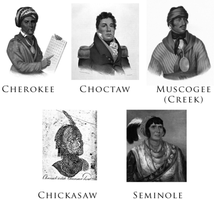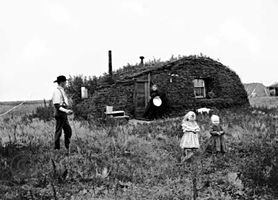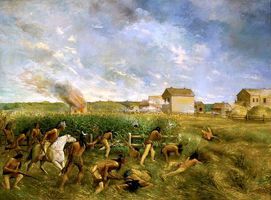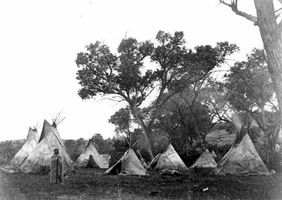How Alaska Are You?
Head to the Last Frontier and come find out how Alaskan you really are!

By BrainFall Staff - Updated: April 2, 2024
The history of the United States can’t be told without telling the story of the Native Americans who lived there first. The many tribes that flourished throughout North American have a rich culture, and their history is one that we should all remember. So how much do you know? Take our quiz to see just how much you know about the Native Americans of North America!
Think you know your Native American history? Many folks claim a solid understanding, but when push comes to shove, they might find their knowledge is as patchy as a quilt without squares. That's where our quiz swoops in like a bald eagle on a trivia mission! We're excited to put you to the test with questions that might just ruffle some feathers.

It's a bit of a (peace) pipe dream to imagine everyone acing this quiz, but that's the thrill of the chase! Only one in fifty can claim victory, waving their knowledge like a warrior's banner. So, have you got the smarts of a seasoned chief or will you end up on a voyage of discovery?
Gather your wits and summon your inner historian because this is not your ordinary history quiz. We've dug deep into the annals of the past to bring you a challenge that's as fun as it is enlightening. No need to send smoke signals for help, though; just trust those brain cells and see if you're part of the elite trivia tribe! Ready to take the leap? Join us on BrainFall.com and let's see if you can pass this Native American quiz!

Ready to test your chops on Native American history? We're talking about a saga that starts way before the first Eurovision song contest—a tale of diverse cultures thriving in North America.
Before European feet ever awkwardly shuffle-danced on these shores, Native Americans had a seriously vast range of societies. From the apartment-style pueblos in the Southwest to the Iroquois Confederacy's democratic setups in the Northeast, it was diverse. Oh, and let's not forget - the Cherokee, proud and structured, were totally owning it in the Southeast (no biggie, just creating syllabaries and governing democracies before it was cool).
Cue the entrance of European explorers, and the atmosphere changed quicker than fashion trends. Our pal, Hernando de Soto, stumbled across the Mississippi in 1540, igniting a Euro craze for land claims and all the "fun" that came with conquest. The British and the French? They played a high-stakes game of "Capture the Flag" with Native American territories. Spoiler alert: it wasn't all crumpets and friendly handshakes.
Raise your hand if Congress has ever made you pack up and move (awkward silence). The Indian Removal Act of 1830 did just that to the Cherokee, Seminole, Creek, Chickasaw, and Choctaw tribes, setting them on a customer service hold that ended in the heartbreaking Trail of Tears. But hey, history didn't hit the pause button there. The Apache, fiercely determined under stars and stripes, kept their "resist-an-invasion" playlist on repeat, while the rest of us eventually replaced muskets with hashtags and still couldn't agree on Congress.
So, armed with these historical tidbits, can you triumph in our Native American history quiz? Let's find out if you're the trivia chief we've been waiting for!
Before we dive into the nitty-gritty, let's acknowledge the rich tapestry Native American cultures have woven into our modern lives. From the languages that echo through the canyons to the inventions we couldn't live without, the fingerprints of Native American heritage are everywhere!
When we talk about languages and tribes, we're not just whispering sweet nothings. Did you know the U.S. has a pecking order with over 570 federally recognized tribes? Talk about a full deck! Thanks to the Native American Languages Act, efforts to preserve the linguistic heritage from the articulate Navajo to the lyrical cadences of the Ojibwe are going strong.
Taking a stroll through American society? You’ll find Native American influences as staple as cheese in a pizza! They gifted us with trending sports like lacrosse and the oh-so-strategic tug-of-war we love to play at family BBQs. Not to mention, many cities like New York got their names from Native American words—talk about setting the trend!
Phew, let's switch gears and address the bison in the room—contemporary issues. Native American tribes like the Cherokee and Shoshone are still battling for recognition and rights in cities and courts across the United States. It's more than a history lesson; it's a modern-day story about saying "Hey, we matter!" in bold, italicized, and sometimes even bold italic letters.
So, quiz whizzes, are you ready to text your friends on your canoes while munching on some popcorn—corn, another genius Native American invention—about how inspired you are? Let's see if you can score higher than a Mohegan Sun slot machine on this quiz!





























































